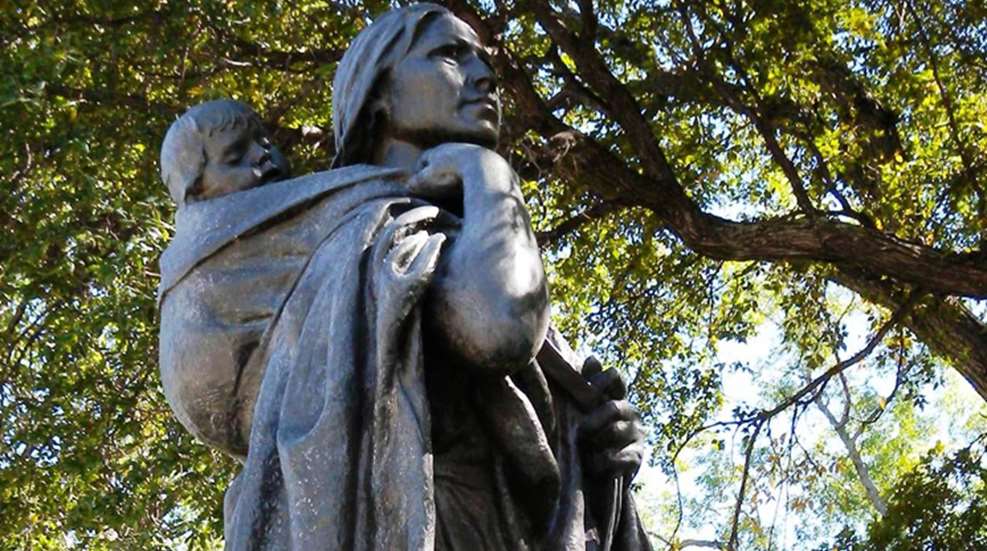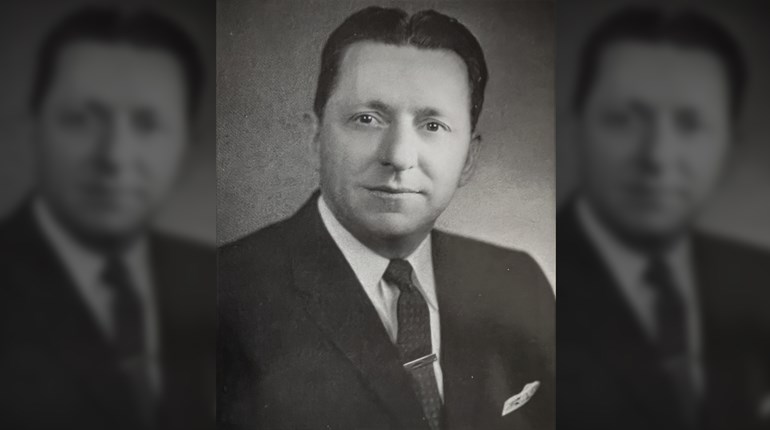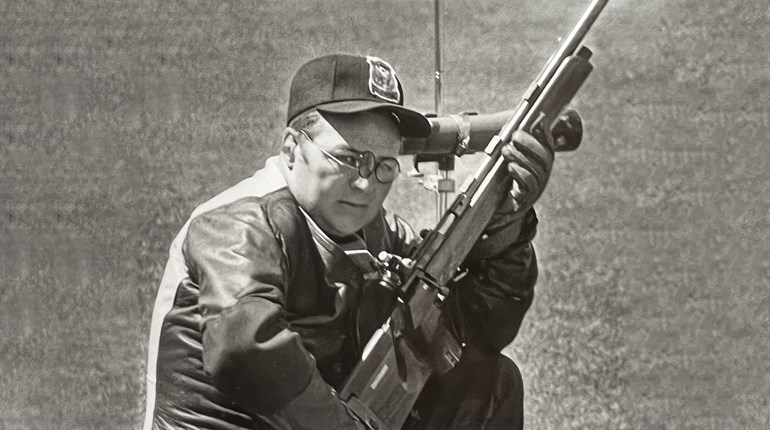
January 1806, Fort Clatsop and vicinity, Astoria, Oregon ...
Sacagawea smiled to herself as she headed out with 23 members of the expedition to check on a beached whale. She could hardly wait to see the "great waters" and the monstrous fish, two things she'd only heard about, but had always wanted to see.
It hadn't been easy convincing Captain Clark to let her accompany them, but she'd argued that after traveling with them all this time, it would be cruel not to allow her to see either. So here she was.
A short time later, she gazed in awe at her surroundings. Beside her, the men immediately set to carving up the whale. The blubber and oil could be used to feed the expedition members, who'd had little to eat over the last couple of months as they hunkered down for the long winter.
But the bounty for which they were so grateful would soon sicken many of them and bring them near death, their stomachs no longer able to digest such rich food after being without for so long. One by one, they succumbed to nausea, stomachaches, fever and chills. "I've got to do something," thought Sacagawea, "or some of them are going to die."
Thus it was that Sacagawea strapped her young son, John Baptiste, on her back, departed from Fort Clatsop and hiked through the wilderness in search of fennel roots. The bulbs, leaves and seeds could be used to treat the men.
But it was tough work, day in and day out, as Sacagawea searched for the fennel roots and took them back to the fort, where she tried to grow a larger supply of the herb. The seeds, especially, had medicinal properties that she knew would help save the men. It would take a lot of them-and a lot of time.
But slowly, the men started to improve-at first just one or two of the least sick, then more and more. Eventually, Sacagawea nursed them all back to health.
*************
Sacagawea (sah-cah' gah-we-ah), c.1788-1812,was a bilingual Shoshone Indian who accompanied Lewis and Clark on an expedition to explore the Western United States. Her role is often described as that of interpreter and guide but, as you will see, it was actually so much more than that.
Early Life
Sacagawea, the daughter of a Native American Shoshone chief, was born in a region of the Rocky Mountains in what is now known as the state of Idaho. The tribe was quite poor, but she lived a fairly stable life until she was 12 years old. That all changed when a rival tribe, the Hidatsa Indians, kidnapped Sacagawea and several other Shoshone girls and held them captive in the Hidatsa-Mandan villages in what is now North Dakota.
Three years later, Sacagawea was sold or traded to French Canadian trapper Toussaint Charbonneau, who married the young teen shortly thereafter.
Lewis and Clark Expedition
Sacagawea joined the Lewis and Clark expedition in early 1805, along with her husband and two-month-old son. She remained with the expedition until August 1806. Originally brought on for her interpretive skills and her familiarity with the terrain, the woman proved her worth a thousand times over.
She was cool-headed in a crisis. Sacagawea's knowledge of plant life enabled her to identify and find food such as edible berries, prairie turnips and the wild artichokes that might otherwise be missed or passed over, and to concoct herbal remedies for healing medicines.
She was also helpful in negotiations with some of the Native American tribes, particularly when she encountered the Lemhi Shoshone band with whom she lived for the first 12 years of her life. It seems that her brother had replaced their father as chief. So following an excited and happy reunion, Sacagawea was able to assist in negotiating the purchase of horses, which Lewis and Clark needed to continue their journey.
Arguably, Sacagawea's most important role was her mere presence, which helped allay the natural suspicion of the native peoples, many of whom had never before seen a white man and were wondering if they'd be called upon to defend their lands. The presence of an Indian woman and a child seemed like a sign that these white travelers intended no harm.
Later Years
Sacagawea and her husband returned to the Hidatsa-Mandan villages in 1806. Three years later, they moved to St. Louis, Mo., where Captain Clark set them up on a farm in exchange for which Clark would see to the education of the couple's son, John Baptiste.
Two years later, Charbonneau and Sacagawea left St. Louis to join a fur-trading expedition, leaving Jean Baptiste with Captain Clark, who had become the boy's godfather. About this time, or shortly thereafter, Sacagawea delivered a daughter, Lisette.
In August 1812, 25-year-old Sacagawea passed away from "putrid fever." Within a year, Clark had adopted both of her children. Jean Baptiste was educated in St. Louis, traveled to Europe and worked at a number of jobs in the American West. Little is known about Lisette, who may not have survived to adulthood.
Controversy
There has been some speculation that Sacagawea did not die at 25, but instead lived to a ripe old age on the Wind River India Reservation in Wyoming. But the evidence is skimpy, and most historians believe she died in 1812.
Tributes
Sacagawea has been recognized again and again for her accomplishments: with statues and monuments, in film and literature, on U.S. postage stamps and on a U.S. dollar coin. Indeed, she may well be the most often memorialized U.S. woman ever.
A Google search of statues and monuments related to Sacagawea produces a long list, the first of which-chronologically-is a bronze statue, revealed at the Lewis and Clark exhibition in 1905 in Portland, Ore. The statue was designed by Alice Cooper and funded by the National American Women' Suffrage Association to commemorate the centennial anniversary of the Lewis and Clark Expedition.
While the Portland statue was the first memorial dedicated to Sacagawea, there have been many more since that time, and there are undoubtedly many more to come, including the following:
Coming Home, Sacagawea Park in Three Forks, Mont.
The Corps of Discovery, Case Park in Kansas City, Mo.
Sacagawea, North Dakota State Capitol, Bismarck, N.D.
Sacagawea and Jean Baptiste, National Cowgirl Hall of Fame Fort Worth, Texas
Sacagawea Interpretive, Cultural and Educational Center, Salmon, Idaho
There is also a Sacagawea River in Montana.
Film
Among the films made about Sacagawea is The Far Horizons (1955), a drama about the Lewis and Clark Expedition starring Donna Reed as Sacagawea, Fred MacMurray, Charlton Heston and Barbara Hale.
Documentaries include the following:
Lewis and Clark: Great Journey West (2002)
Journey of Sacagawea (2004) is a PBS documentary
Sacagawea: Heroine of the Lewis and Clark Journey (2004)
The Spirit of Sacagawea (2007)
All are available at www.amazon.com.
Literature
There are many, many books about Sacagawea. Among the more highly rated on www.amazon.com are the 1424-page novel Sacagawea by Anna Lee Waldo (1984) and, for readers 8-12, the non-fiction Who Was Sacagawea? by Judith Bloom Fradin and Dennis Brindell Fradin (2002).
Stamps
Sacagawea has been immortalized on two U.S. stamps. The first, in 1954, was a 3-cent stamp featuring Sacagawea with Lewis and Clark. The second, in 1994, was a 29-cent stamp-part of the Legends of the West commemorative series-featuring a full-color image of Sacagawea.
Currency
The Sacagawea dollar is often referred to as the golden dollar because it has a copper core encased in manganese brass. The coin, which was a replacement for the Susan B. Anthony dollar, has been minted every year since 2000. However, it was not released into general circulation between 2002 and 2008 or from 2012 to the present, due to low demand and popularity.






































